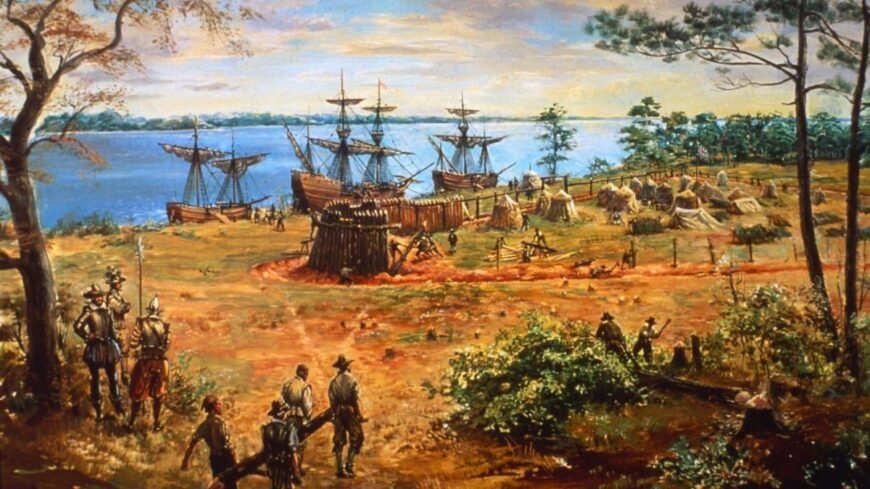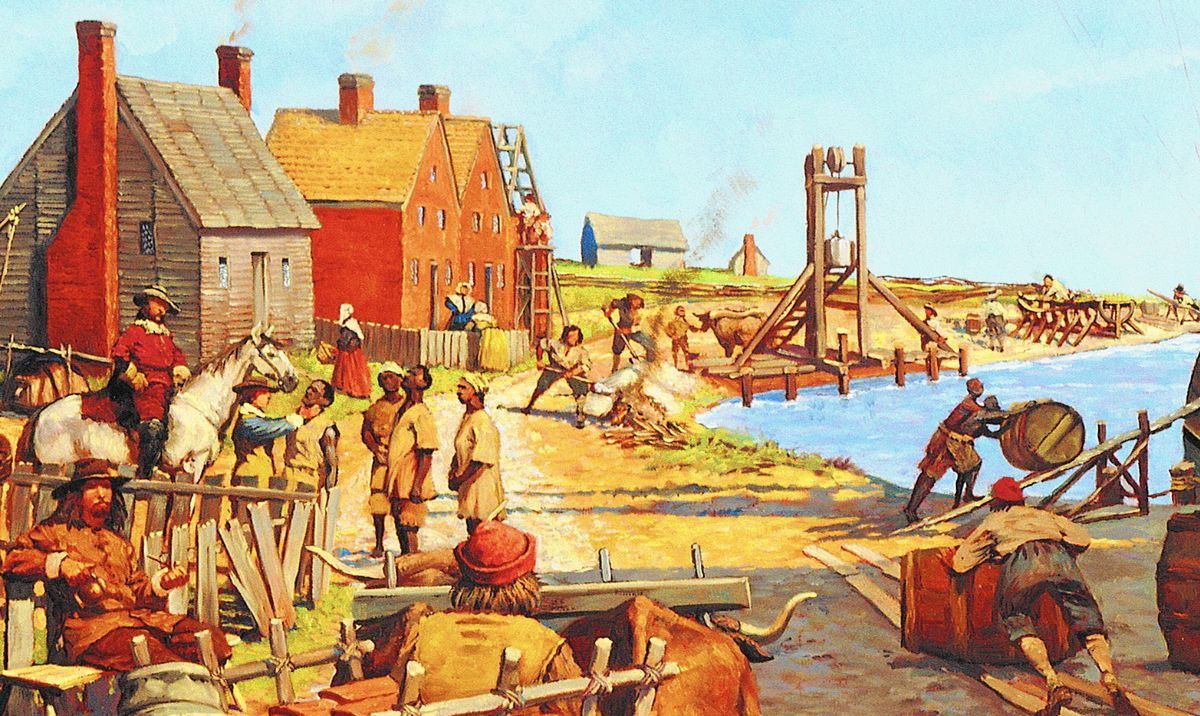This town in Virginia may only be 16,000 people now, but it played a pivotal point in creating the United States as it is now. Jamestown is now four hundred years old and was the first European settlement within the USA, but there’s much more to it than just that.
Jamestown In The Old Days
So, what was Jamestown like back then? What allowed it to be successful? Why did people come there in the first place? These are all good questions for anyone interested in America’s history.
The Location Of Jamestown

Let’s start off with location. Jamestown is on a peninsula where the Chickahominy River flows into the James River. The original settlers found this area by traveling north from their previous settlement of Roanoke Island, which was much farther north and had failed due to hostilities with indigenous Americans. There were plenty of weapons laying around to fight battles with these natives, but not enough food or space to survive, which contributed greatly to the failure of this island colony even though they tried hard they didn’t have much luck growing things and they were constantly attacked by the native population. Luckily, Jamestown was different. They had no such problems with the terrain and were able to make a large surplus of crops for exporting, even though their first attempts yielded dismal results that made them want to leave altogether.
What Was Life Back In Jamestown?

What was life like at Jamestown back then? At first it was quite hard; most people didn’t survive their first year because of malnutrition and illness brought on by poor conditions and exposure to the elements. The only reason more survived was that other ships passed through carrying settlers that wanted to stay despite how unpleasant things were there. The colony’s survival depended heavily on other ships passing by until 1610 when John Rolfe discovered he could successfully grow tobacco in Jamestown. This change in fortune allowed the colony to thrive and gave people there the opportunity to focus on other aspects of their lives like education, religion, and politics.
This brings us well into the late 1600s when Sir William Berkeley was governor of Virginia. He helped develop many programs for improving agriculture and made sure everyone knew how to read and write by funding schools where this was taught. While Sir Berkeley had good intentions, he started running into problems because his rules restricted colonists’ rights, which sparked dissent within Jamestown. Many saw Sir Berkeley as a dictator who ruled with an iron fist so they fought back to remove him from office which didn’t work out well for them at all. The fighting led to civil unrest that turned violent until it escalated to the point where they fought each other in what’s now known as Bacon’s Rebellion. After several months of warfare the rebellion was crushed by Berkeley, but it had already done enough damage for him to leave his post as governor.
By the 1700s Virginia was divided into counties and each one elected officials who made laws that applied to their local area. Of course there were occasional conflicts between these counties about how things should be run because no one could agree on anything, but most of them managed to work out their problems without too much fuss. There are countless more events within this time span that have shaped America into what it is today so don’t forget to research it!
The arrival of Europeans brought many changes to Jamestown.
How It Was Settled
In 1606, early in December, when the waters would be at their calmest, three ships began the journey from England to Virginia to form the first English Settlement in North America. These people were a mix of tradesmen and their families, all giving up everything they knew in the chance that they could start life fresh on distant shores.
Together this colony used the materials they brought with them and made their way sixty miles inland to find fresh river water and trees to build with. They spent the full first year building homes and creating fields for their food. By June 15th, the fort was completed to protect themselves against any attacks that might occur.
The land they chose was the hunting lands of local indigenous Powhatan people. Unfortunately, the settlers weren’t taking things well, drinking unclean water and eating local berries or plants that were poisonous. Numbers quickly fell from swellings, fluxes, fevers, and famine: they would have died off if the Powhatan people didn’t step in. Despite having their lands occupied, these indigenous people gave them enough food and clean water to ensure the English didn’t starve yet.
Turmoil That Occurred
Unfortunately, through fighting and poor communication, that relationship took a poor turn in 1909. Although the summers were easier and the fields produced some food for the first couple of years: by 1609, the settlers found themselves in a drought. This drought took away any food, water, and hope that many of the settlers had. As a result, the Powhatans stopped aiding the settlers and cut off communication. Unfortunately, things only got worse when the area was struck with a severe winter.
Many died from freezing and starvation, and recent evidence supports historical accounts that they had to go to desperate measures to survive. Although they’d started the season with 500 colonists, by March of 1610, those numbers were down to less than 100. A fortunate 37 had been able to escape by ship, so only sixty were left in the town when supplies and food were available to them once more.
In the late 1600s, a fire took over the fort, and what remaining generations of people lived there were removed to Williamsburg.
What Jamestown Is Like Now

Most of Jamestown is a historic site that even has the ruins of the settlement on display. These ruins are of the 18th century Ambler Mansion, but they have recreations of a 1610s fort and a Powhatan indigenous village. Most of the Jamestown apartments and homes are affordable since it’s become a sleepy town without much to do or see outside of its historical aspect. Visit apartmentguide.com to find more about them.




